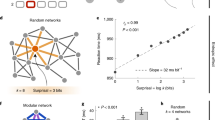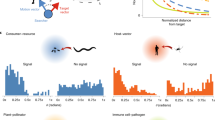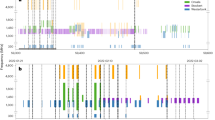Abstract
THE largest microwave radio telescope on Earth, at the Arecibo Observatory of the National Astronomy and Ionosphere Center, will soon have the capability of communicating with an identical radio telescope, if such exists, anywhere in the Galaxy. But such communication assumes some previous agreement between the transmitting and receiving civilizations, or mutual discovery of the chosen radio frequency, bandpass, information rate and each other's location.
This is a preview of subscription content, access via your institution
Access options
Subscribe to this journal
Receive 51 print issues and online access
$199.00 per year
only $3.90 per issue
Buy this article
- Purchase on Springer Link
- Instant access to full article PDF
Prices may be subject to local taxes which are calculated during checkout
Similar content being viewed by others
References
Cocconi, G., and Morrison, P., Nature, 184, 844 (1959).
Drake, F. D., McGraw-Hill Yearbook of Science and Technology, 384 (1961).
Troitsky, V. S., in Communication with Extraterrestrial Intelligence (edit. by Sagan, C.) (MIT Press, Cambridge, 1973).
Verschuur, G., Icarus, 19, 329 (1973).
Zuckerman, B., and Palmer, P., Paper given at URSI meeting, Socorro, New Mexico, January 1973.
Shklovskii, I. S., and Sagan, C., Intelligent Life in the Universe (Holden-Day, San Francisco, 1966).
Kardashev, N. S., in Extraterrestrial Civilizations: Problems of Interstellar Communication (edit. by Kaplan, S. A.) (Nauka, Moscow, 1969).
Drake, F. D., in Communication with Extraterrestrial Intelligence (edit. by Sagan, C.) (MIT Press, Cambridge, 1973).
Sagan, C., Icarus, 19, 350 (1973).
Oliver, B., Project Cyclops, A Design Study of a System for Detecting Extra-Terrestrial Intelligent Life (NASA Document CR11445, 1971).
Oliver, B., in Communication with Extraterrestrial Intelligence (edit. by Sagan, C.) (MIT Press, Cambridge, 1973).
Henderson, L. J., The Fitness of the Environment (Macmillan, New York, 1913).
Blum, H. F., Time's Arrow and Evolution (Princeton University Press, Princeton, 1931).
Sagan, C., Life (Encyclopedia Britannica) (1970).
Pimentel, G. C., et al., in Biology and the Exploration of Mars, Publication 1296 (National Academy of Sciences/National Research Council, 1966).
Kardashev, N. S., Transmission of Information by Extraterrestrial Civilizations, Soviet Astr., 8, 217 (1964).
Author information
Authors and Affiliations
Rights and permissions
About this article
Cite this article
DRAKE, F., SAGAN, C. Interstellar Radio Communication and the Frequency Selection Problem. Nature 245, 257–258 (1973). https://doi.org/10.1038/245257a0
Received:
Issue Date:
DOI: https://doi.org/10.1038/245257a0
This article is cited by
-
On making radio contact with extraterrestrial civilizations
Astrophysics and Space Science (1978)
-
Time markers in interstellar communication
Nature (1975)
-
Physical sciences: Difficulty of interstellar radio communication
Nature (1974)
Comments
By submitting a comment you agree to abide by our Terms and Community Guidelines. If you find something abusive or that does not comply with our terms or guidelines please flag it as inappropriate.



